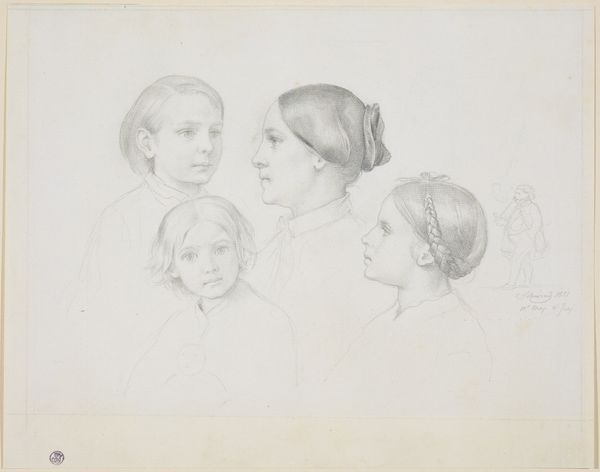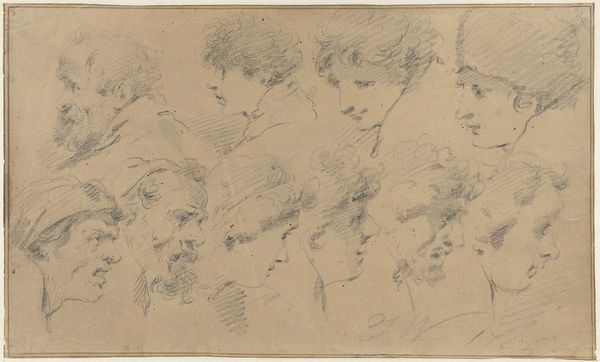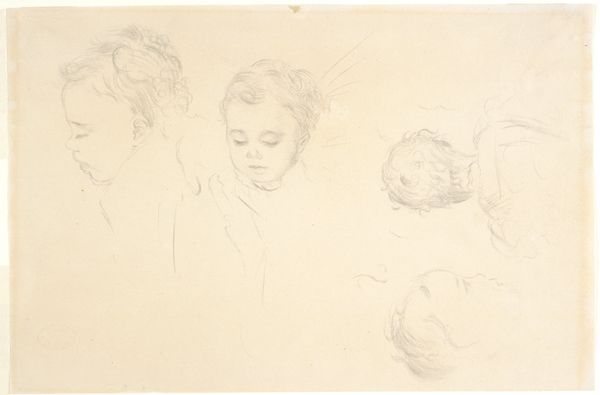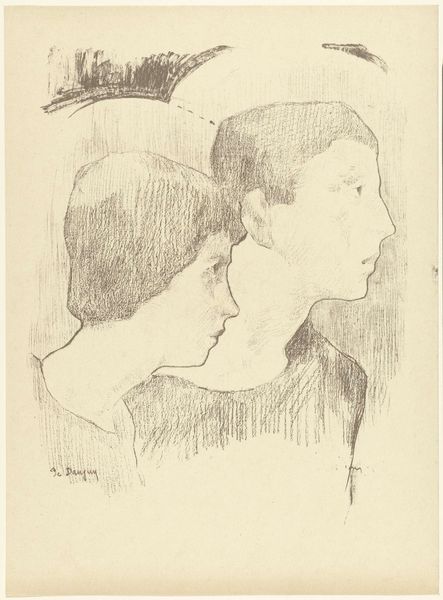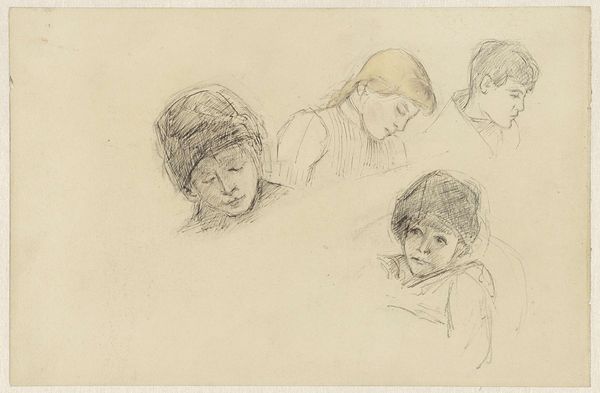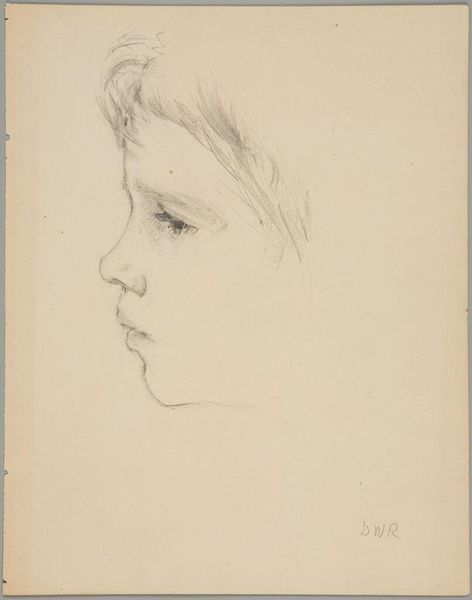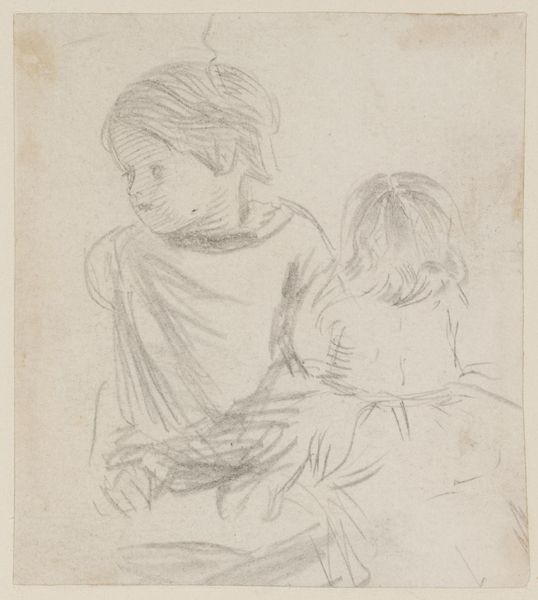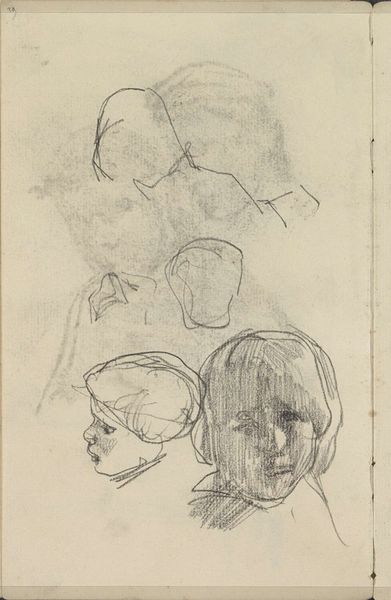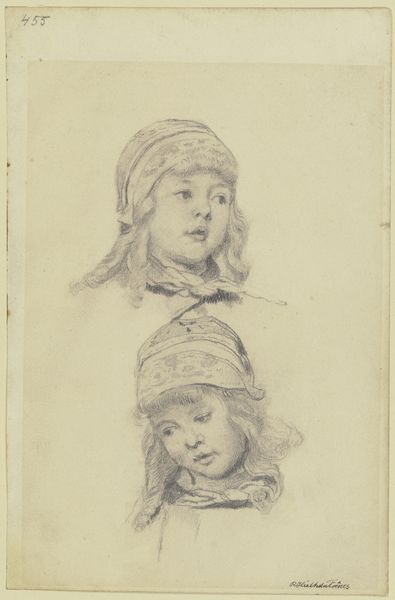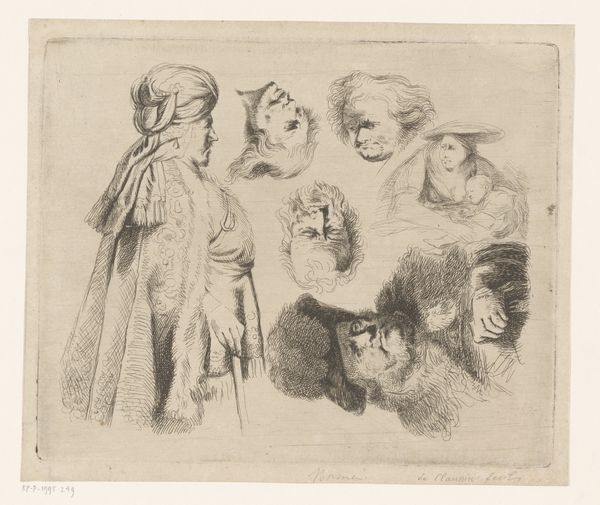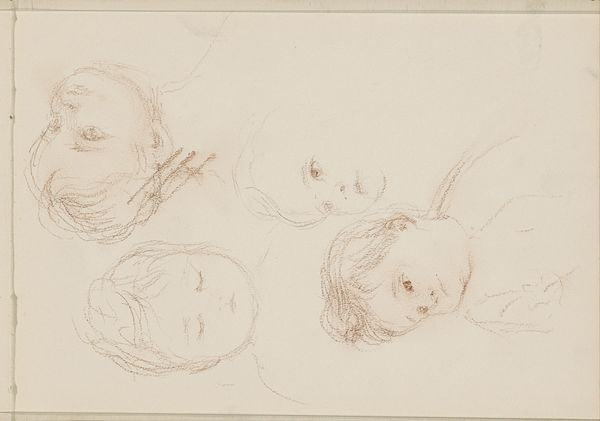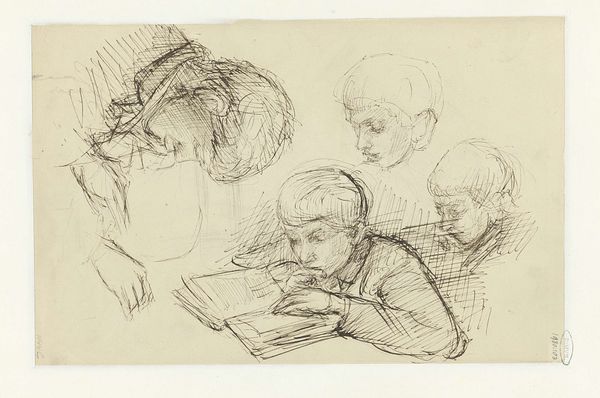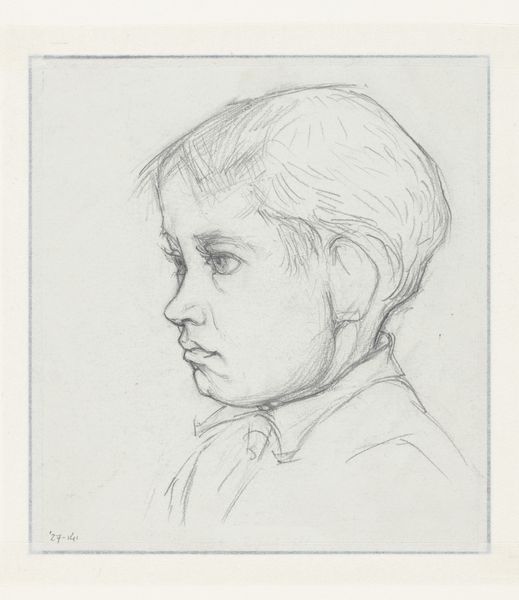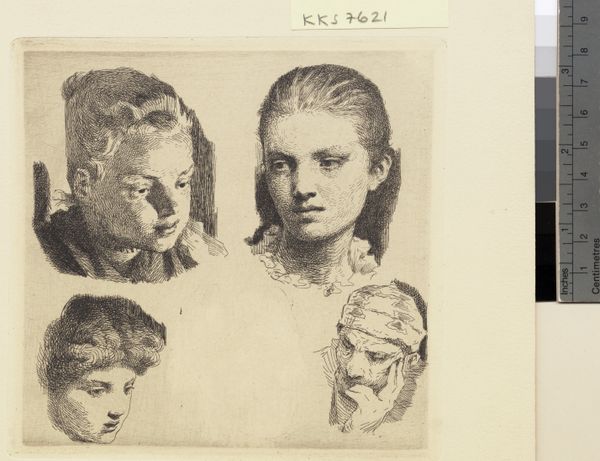
The Artist's Children: Friedrich, Emil, and Ernst 1843 - 1853
0:00
0:00
drawing, print, pencil
#
portrait
#
drawing
# print
#
figuration
#
group-portraits
#
romanticism
#
pencil
#
portrait drawing
#
academic-art
Dimensions: sheet: 5 5/8 x 8 1/8 in. (14.3 x 20.7 cm)
Copyright: Public Domain
Editor: Here we have Friedrich Preller the Elder’s, "The Artist's Children: Friedrich, Emil, and Ernst," created between 1843 and 1853. It’s a pencil drawing and print portraying three young boys in profile, lined up neatly. It strikes me as both intimate and formal. What do you see in this piece? Curator: What immediately strikes me is the Romantic idealization of childhood innocence, juxtaposed against the constraints of societal expectation embodied in their almost regimented arrangement. Think about the social construction of boyhood during that era. How might this image reflect and perpetuate particular class-based notions of masculinity and family lineage? Editor: So you’re suggesting that the composition itself speaks to power dynamics within the family and society? Curator: Precisely. The careful rendering, the similarity in their hairstyles and clothes, the way they’re positioned—it all speaks to a desire to present a unified image of the family. But I'd push us to also consider the silent narratives, and ask about the unacknowledged labor in producing such a portrait, and who is omitted or rendered invisible within its frame. Whose perspectives are we missing? Editor: That’s a very different lens than I usually consider, thinking about who *isn’t* in the picture as well as what it means to create such a controlled image. Curator: It’s about understanding that even the most seemingly straightforward images are embedded within layers of social and political context. Every artistic decision is a reflection of something larger. What happens when we approach portraits, such as this, with questions of representation and access in mind? Editor: This makes me think more critically about the choices the artist made, and how these choices reflect the values of his time, thank you.
Comments
No comments
Be the first to comment and join the conversation on the ultimate creative platform.
